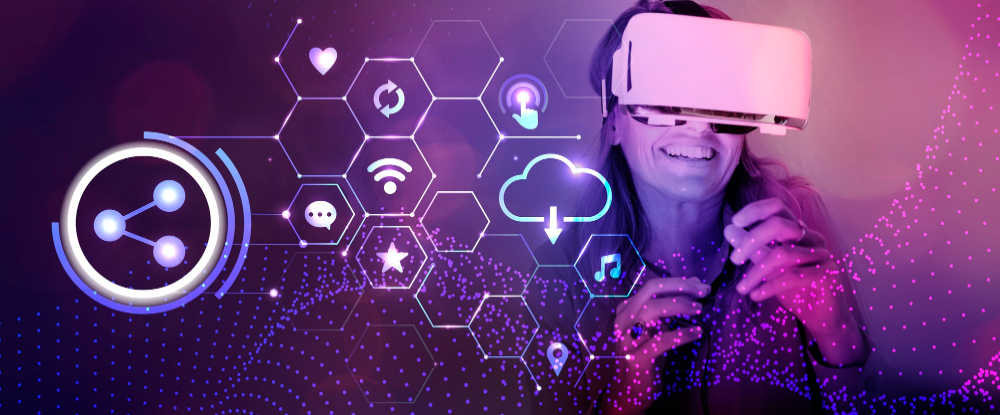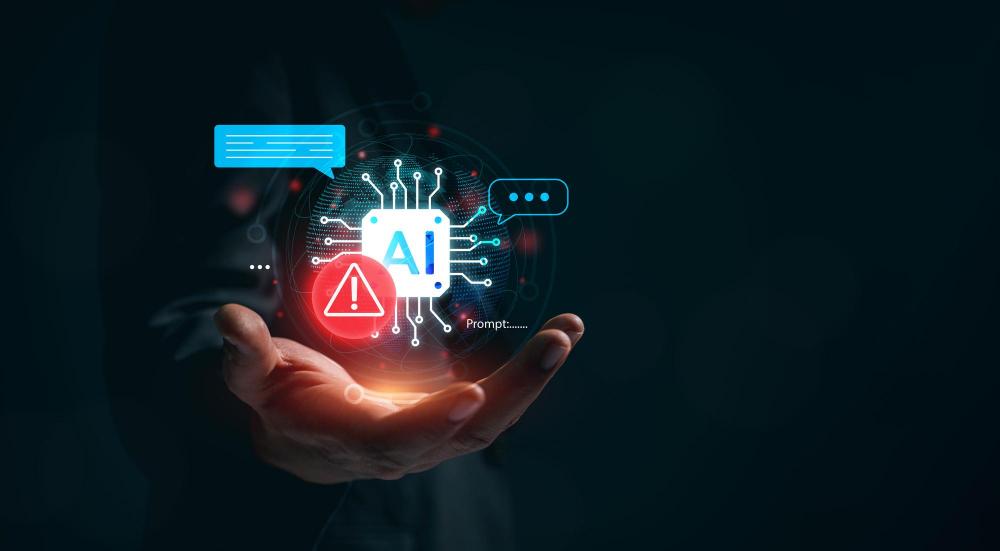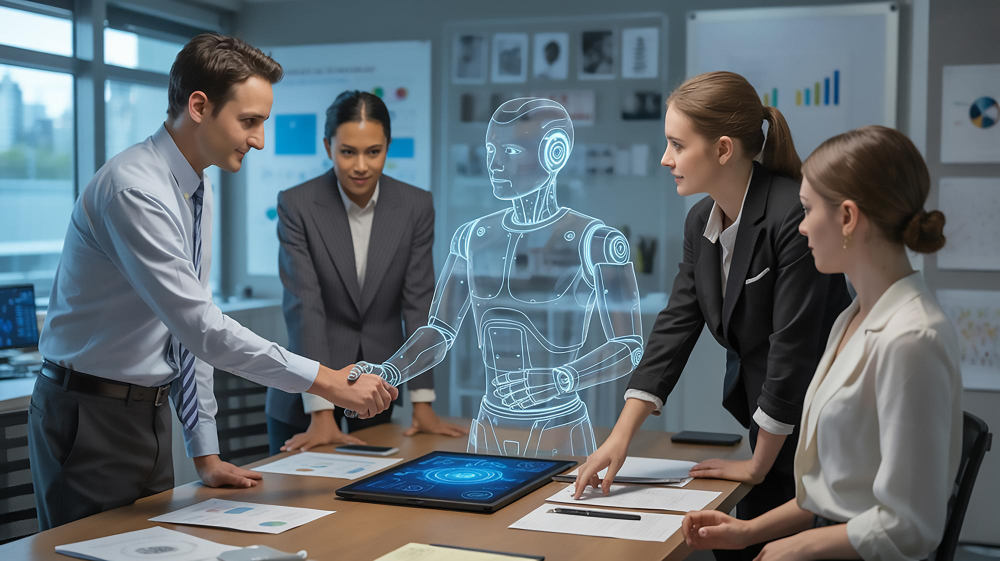- Blog
- October 1, 2025
Digital Twins in Professional Services: Bridging Virtual and Physical

- Blog
- October 1, 2025
Digital Twins in Professional Services: Bridging Virtual and Physical
For years, digital twin technology has been closely associated with manufacturing, aerospace, and engineering—domains where physical assets are complex, and virtual replicas bring tremendous value. But today, the power of digital twins is expanding beyond machines and infrastructure into the realm of professional services. By bridging the virtual and physical worlds, digital twins are enabling service providers to simulate outcomes, test strategies, and optimize delivery in ways that were once unimaginable.
For consulting firms, financial services providers, healthcare organizations, and even legal practices, the ability to create real-time, data-driven virtual representations of processes, clients, or service ecosystems is a game-changer. Digital twins are no longer about “things” alone; they are about people, processes, and services—offering professional service firms a unique way to deliver value, reduce risk, and enhance client experiences.
Understanding Digital Twins in the Context of Professional Services
A digital twin is a virtual model that mirrors a physical entity or system. This model continuously integrates real-time data, creating a dynamic simulation that can predict, analyze, and optimize performance. In industries like manufacturing, this often means replicating machines, factories, or supply chains.
But in professional services, the concept extends to abstract and intangible assets. For example:
- A consulting firm might create a digital twin of a client’s business process to test new strategies before implementation.
- A financial institution could simulate customer behaviors or market dynamics to anticipate risks.
- A healthcare provider might build digital twins of patients for personalized monitoring and treatment planning.
The essence remains the same: combining data, AI, and simulation to improve decision-making and outcomes. What changes is the focus—from machines to people and services.
The Shift from Physical to Virtual in Professional Services
Professional services have traditionally relied on human expertise, case studies, and experiential judgment. While effective, this approach often lacks real-time feedback and the ability to test scenarios before applying them in the real world.
For example:
- A strategy consultant can recommend a business transformation plan, but predicting how it will perform in dynamic market conditions is challenging.
- A legal firm may interpret new regulations, but anticipating how changes will play out across industries is complex.
- Healthcare services can suggest treatment plans, but patient responses vary significantly.
This is where digital twins create a shift. By virtualizing processes, clients, or systems, service providers can simulate scenarios, anticipate challenges, and refine decisions—turning professional services into a blend of art, science, and technology.
Applications of Digital Twins in Professional Services
- Consulting and Business Strategy: Consultants can create digital twins of organizational structures, workflows, or supply chains. These models allow them to test different business strategies, simulate risks, and predict outcomes before making real-world recommendations.
- Healthcare Services: In healthcare, patient-specific digital twins are revolutionizing care delivery. Virtual models of organs, treatment responses, or entire patient journeys can guide personalized treatment and improve outcomes. According to Deloitte, digital twins are increasingly being used in precision medicine to simulate treatment effects.
- Facilities and Real Estate Management: Professional services firms managing real estate can use digital twins to model building occupancy, energy consumption, and maintenance needs. This helps optimize space usage and sustainability initiatives while reducing operational costs.
- Financial Services: Banks and insurers are experimenting with digital twins to simulate customer journeys, predict credit risks, or anticipate fraud patterns. By modeling customer behavior, they can tailor products and mitigate risks more effectively.
- Legal and Compliance Services: Law and compliance firms can leverage digital twins to predict the impact of regulatory changes on clients. Virtual models of compliance frameworks can help organizations prepare for audits and adapt quickly to new rules.
Benefits of Digital Twins for Service Firms
- Improved Decision-Making and Predictive Power
Digital twins don’t just reflect the present—they anticipate the future. By simulating outcomes, firms can forecast risks, identify opportunities, and make better-informed recommendations for clients. - Enhanced Client Engagement and Trust
Instead of presenting static reports or models, firms can use interactive digital twin simulations to demonstrate scenarios in real time. This creates transparency, strengthens client confidence, and often accelerates decision-making. - Operational Efficiency and Cost Savings
Digital twins reduce trial-and-error in real-world settings. For example, testing a business transformation virtually avoids costly disruptions, while facilities management twins can cut energy and maintenance costs significantly. - Personalization and Customization
With real-time data, professional services firms can create tailored solutions that evolve with each client’s needs—whether it’s patient-specific healthcare, customer-centric financial products, or bespoke legal compliance strategies. - Agility in Navigating Change
Market shifts and regulatory updates are inevitable. Digital twins allow firms to simulate “what-if” scenarios quickly, helping clients adapt to change without unnecessary delays or risks. - Innovation as a Service Differentiator
By adopting digital twins, firms can introduce entirely new service offerings—like continuous strategy optimization or proactive compliance monitoring—creating a strong differentiator in a competitive market.
Challenges in Adopting Digital Twins for Professional Services
- High Investment and ROI Concerns
Building and maintaining digital twin ecosystems requires significant upfront investment in infrastructure, platforms, and talent. Firms must carefully balance costs against measurable returns. - Complex Data Integration
Professional services rely on multiple systems—CRM, ERP, analytics platforms, and client databases. Integrating these into a seamless digital twin often poses interoperability challenges. - Data Privacy, Security, and Compliance
Since digital twins often replicate sensitive business or personal data, ensuring compliance with regulations like GDPR or HIPAA is critical. Breaches could have legal and reputational consequences. - Talent Shortage and Skills Gap
Expertise in AI, IoT, simulation modeling, and advanced analytics is still limited in many service sectors. Firms need to invest in upskilling employees or partnering with technology providers. - Change Management and Cultural Resistance
Many professional services firms are built on human expertise and intuition. Transitioning to data-driven, simulation-based approaches may face resistance from both employees and clients accustomed to traditional methods. - Scalability and Maintenance Challenges
While digital twins can start with pilot projects, scaling them across multiple clients or complex services requires ongoing updates, robust governance, and strong infrastructure support.
The Future of Digital Twins in Professional Services
The role of digital twins in professional services is set to expand as enabling technologies mature:
- AI and Analytics Integration
Smarter digital twins will combine predictive analytics and machine learning to offer deeper insights and prescriptive recommendations. - IoT and 5G Acceleration
With connected devices and high-speed networks, real-time service simulations will become more detailed and accessible. - Client–Service Provider Transformation
Instead of simply offering advice, service firms will deliver living models that evolve with client needs, creating ongoing value. - Hybrid Human–Digital Models
Digital twins won’t replace human expertise but will complement it, enabling professionals to focus on higher-value judgment, creativity, and innovation.
As professional services evolve, the ability to bridge the virtual and physical worlds will determine competitive advantage. Digital twins offer firms a powerful way to simulate, optimize, and personalize services—transforming how they engage with clients and deliver value.
The technology is not without its challenges, but its potential to reshape consulting, healthcare, finance, real estate, and legal services is undeniable. For business leaders and service providers, embracing digital twins is not just about adopting a new tool—it’s about reimagining service delivery for a data-driven, real-time world.
By investing today, professional services firms can unlock new possibilities tomorrow—where expertise meets simulation, and where decisions are faster, smarter, and more impactful than ever before.




